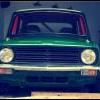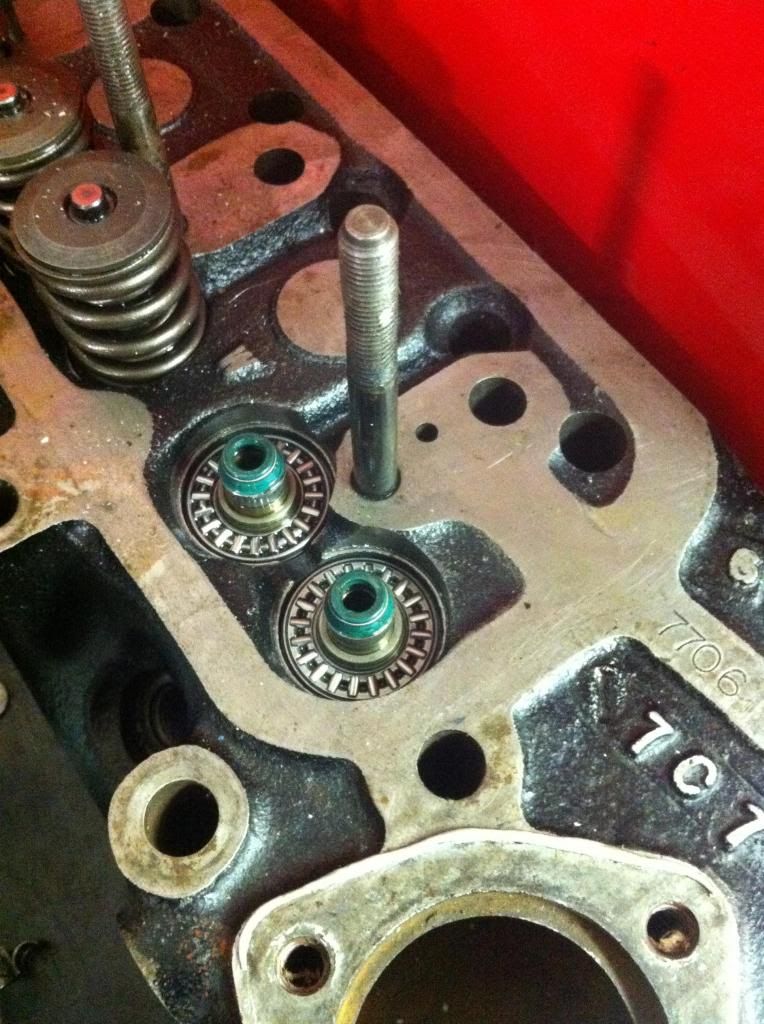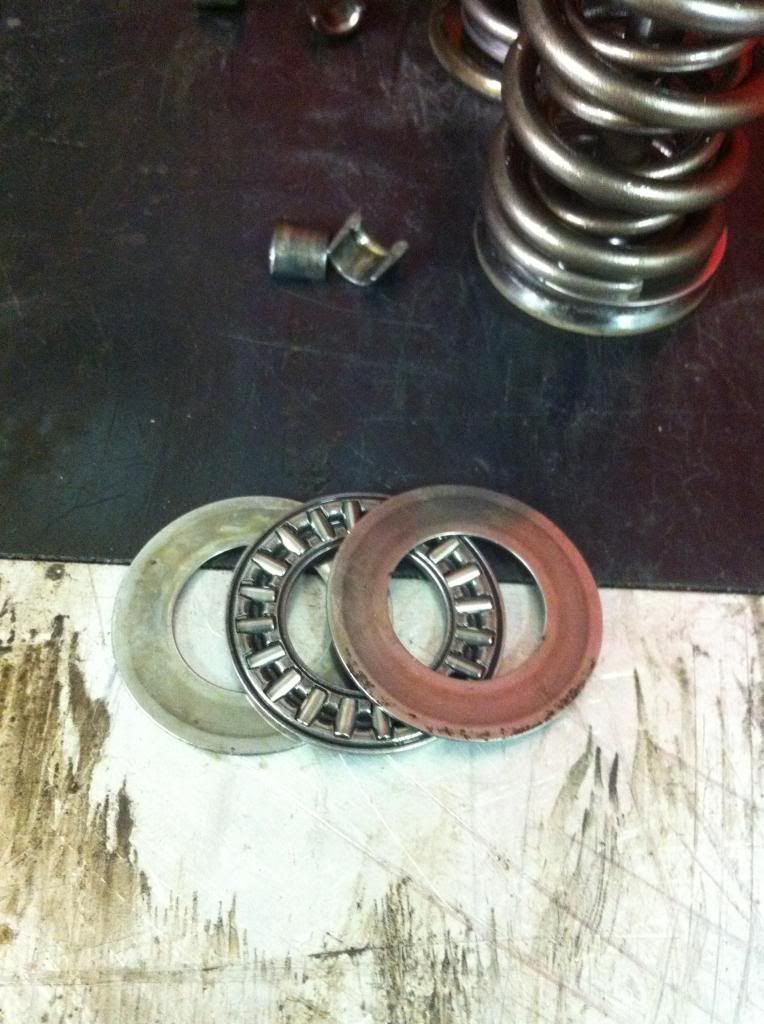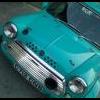Yes, valves are supposed to rotate freely, and the rockers are deliberately set off-centre with respect to the valves, to rotate them slightly each time they open. (I expect that some well-meaning people spend ages shimming their rockers to get them dead central on the valves, but that is a very bad thing to do.) I do agree that a roller bearing will help with the rotation, otherwise most likely the valve will rotate in the collets. The collets will not rotate in the cup, due to the taper causing lots of friction.
I would point out that needle roller thrust bearings, although widely used, are an engineering abomination, because the parallel needle rollers must skid, are the outer and inner ends travel rather different distances. I get annoyed every time I see them! At the modest and well-defined maximum pressure applied by a valve spring, a ball thrust race would be better, but that too is a very slight engineering abomination. Think about it carefully, and you will see that it needs the outer and inner sides of the balls to run slightly different distances, can, in theory, be made to run correctly by making the grooves assymetric, although it is rarely done properly. I was once responsible for a very high precision servo mechanism which had to use a best quality ball thrust bearing at one end, and a single ball on a tungsten carbide pad at the other. The mechanical experts deemed a needle roller bearing to be unsuitable, as the skidding of the rollers would have introduced friction and caused erratic operation.
Valve spring rotation would also be within the capability of a teflon washer, running on a polished steel cup fitted under the spring, which would be far less likely to result in disaster if valve bounce was to occur. I really would not want lots of hardened needle rollers, or balls, getting loose in the engine. It would almost certainly completely trash every major component of the engine and gearbox, possibly even locking the transmission and causing an accident.



















